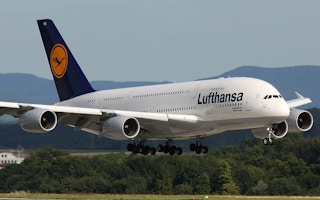What is going on?
18,000 flights - This is the projected number of times Germany’s flag carrier Lufthansa would have to fly a plane with no passengers, just to fulfil new European Union regulations requiring airlines to use 80 per cent of their allocated airport landing slots. The airline has said that if it does not comply with the rules, very lucrative routes could be withdrawn and allocated to competitors.
The EU commission had cancelled this rule early during the pandemic, but for 2021 winter flight plans, it has reintroduced the rule with a 50 per cent benchmark. The United Kingdom government announced an even steeper benchmark with 70 per cent usage of airlines allocated slots.
Competitors of Lufthansa, however, have criticised its complaint, and Irish airline Ryanair is leading the charge. It waded into the controversy, blasting Lufthansa’s claims as spurious, though some have pointed out that the airline, along with other carriers, have not been disclosing information about whether they operate ghost flights too.
Given the overall share of greenhouse gas emissions by the aviation sector, wouldn’t it make sense to avoid as many unnecessary flights as possible, without enforcing sanctions that could potentially harm companies, and affect their investments in new and cleaner technologies?
What does the data tell us?
In 2019, more than 11.1 million flights took off and landed at European airports. During the pandemic, this number dropped to less than 6.2 million flights, a decline of over 45 per cent. Fueled by restrictions all around the world, many planes have been grounded over the last two years, resulting in significantly fewer flights, both domestic and international.
Fewer flights has meant fewer emissions. In fact, 2021 saw emissions declining by over 50 per cent compared to 2019. Considering that the airline industry was responsible for nearly 4 per cent of the total carbon dioxide (
CO2) emissions before the pandemic, a drop by over 50 per cent is significant. From a purely environmental point of view, this looks quite good, right?
Now let us consider the “ghost flights”. Greenpeace estimates that these flights emit around 360,000 tonnes of CO2. Scaled up to the European aviation industry, considering Lufthansa’s market share of around 17 per cent, this could lead to 100,000 ghost flights equalling 2.1 metric tonnes (Mt) of CO2. Or in other words, the emissions of 1.4 million diesel or petrol cars on average .
What is the takeaway?
While there are valid arguments for “use-it-or-lose-it” rules in aviation, it seems questionable that these rules are enforced while many countries are still facing restrictions due to the current Omicron variant. It could make more sense to let airlines optimise their flight plans according to actual passenger demand. That way, many flights and unnecessary greenhouse gas emissions can be saved.
In post-pandemic times, we can also ask ourselves if we need to make every short-range business trip via planes, or if we could opt for alternative modes of transport such as trains, or just have virtual meetings, to save some CO2 emissions.


















